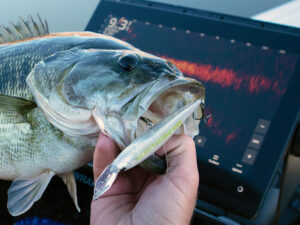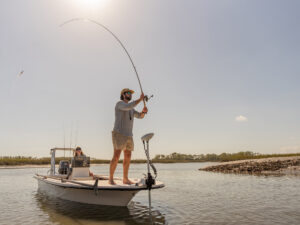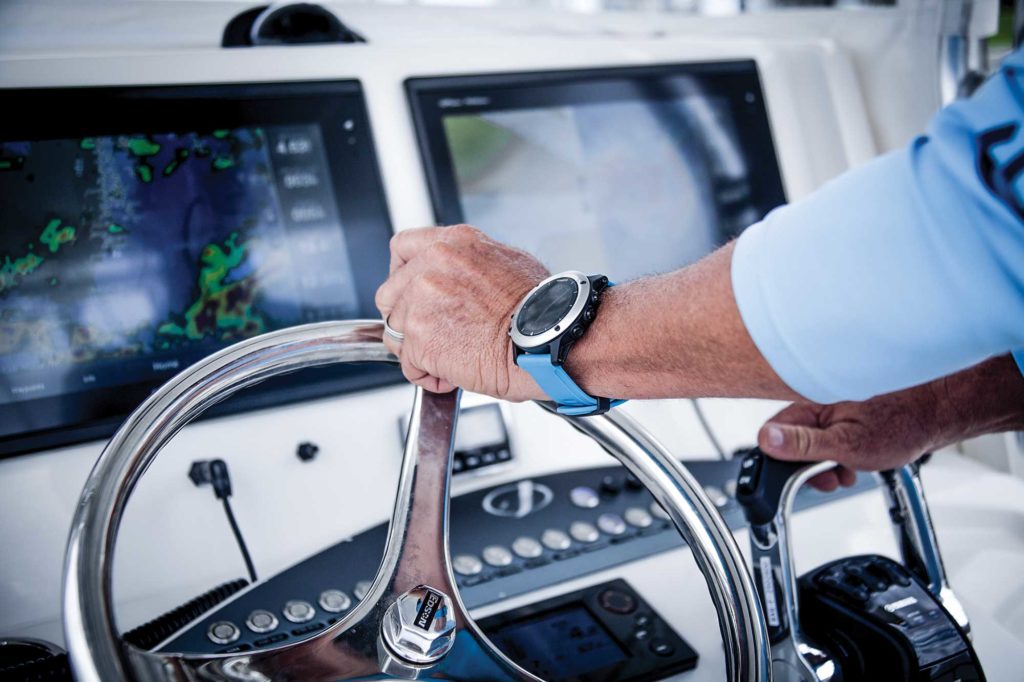
I grew up in the generation of Star Trek, The Jetsons and Lost in Space, gasping at how their trick automation altered everyday life. I can’t help but retain that amazement as I study the rapid development of marine electronics.
Despite the pace of new technology, though, the marine space lags a little behind the mainstream. To quote fiction writer William Gibson, “The future is already here — it’s just not evenly distributed.”
Demonstrable case in point: wearable electronics.
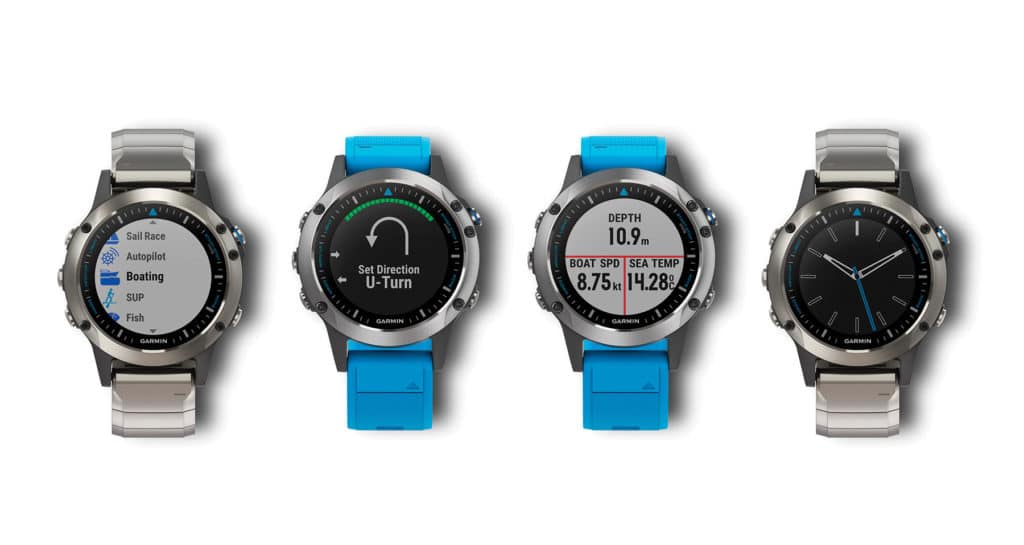
About Time
The Apple Watch debuted in 2015; less than a year later, Garmin introduced the quatix smartwatch, followed quickly by the Nautix hands-free heads-up display, which clipped to a pair of sunglasses and projected vessel speed, depth and other data to the inside of the polarized lens.
Over the past three years, Garmin rolled out quatix generations 3 and 5, but in recent months, the Nautix project was placed on hold: “A little ahead of its time” for marine, Garmin’s director of sales and marketing David Dunn says.
Garmin differs from most other major marine-electronics manufacturers such as Raymarine and Simrad in that it taps into other activity markets, such as aviation, automotive, fitness and outdoor recreation — hence the company’s interest in wearables.
“Since we don’t really play in the hiking, biking, walking, running, flying, and other non-boating ‘-ing’ markets, it doesn’t make much sense for us to develop a piece of hardware,” says Jim McGowan, marketing manager for Raymarine. “We would be more likely to make an app that works on existing wearable devices, such as the Apple or Android watches, rather than bring out our own piece of hardware.”
Outside the marine industry, though, a handful of players appear to be targeting wearables for fishermen, though truth be told, most started out to attract the surfing crowd. Watches like the Casio Pro Tek Smart WSD-F20 don’t aim to sync with onboard electronics or provide actual boat data like Garmin, but they do offer autonomous functions. Casio provides C-Map charting, tide graphing, barometric-pressure readings, and a connection with Fishbrain’s catch-tracking and community-fishing app.
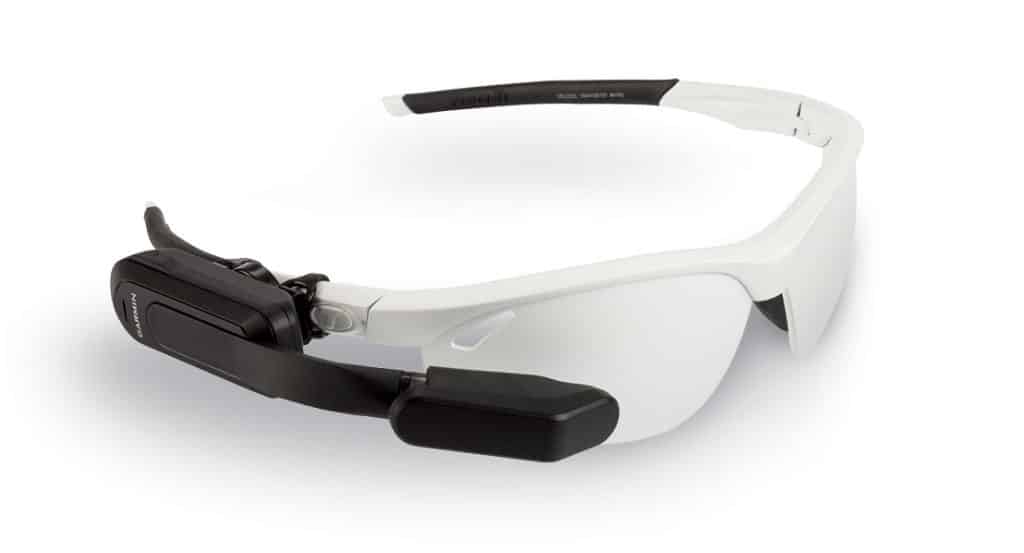
Built for Boating
Garmin’s original quatix was based on its fenix outdoor/recreational GPS smartwatch. Although that first version was a little bulky, it was the first wearable to provide autopilot control and NMEA 2000 streaming. “As our wearable knowledge expanded, the quatix 3 gave you a color screen and a lower profile with different color bands,” Dunn says.
The quatix 5, released last year, further improved on the color screen, and gave users a wrist heart-rate monitor, better connectivity, and quick-fit bands. Quatix 5 carries a water rating of 10 ATM, meaning you can wear it in the shower or while swimming or wakeboarding but not for scuba diving. (Garmin does make the Descent dive watch.)
Designed specifically for the marine market, quatix connects to compatible Garmin chart plotters for remote display of data such as depth, water temperature and speed via NMEA 2000 as well as autopilot control. It also offers remote waypoint marking and data streaming, and provides an altimeter, barometer and compass. The built-in Fusion-Link Lite app controls connected Fusion StereoActive products as well as other ANT-enabled stereo systems.
The watch also pairs with smartphone apps to display tide data, emails and texts, and features an anchor alarm, an anchor-rode calculator and a fish-catch log. To further enhance the quatix’s capabilities, users can download an assortment of profiles.
Quatix’s battery lasts up to two weeks in smartwatch mode or up to 24 hours in GPS mode before needing a recharge. And when you’re finished fishing, you can use the watch to track your fitness workouts. Quatix 5 costs $549.99 or $799.99 for the Sapphire Edition with a stainless bracelet and scratch-resistant sapphire lens.
“The new fenix — due out after Father’s Day — will add a couple of different features, most notably mapping, music and pulse oximetry (oxygen saturation),” Dunn says. “One could assume that would carry to all product lines. Aviation and marine borrow from the outdoor platform.”
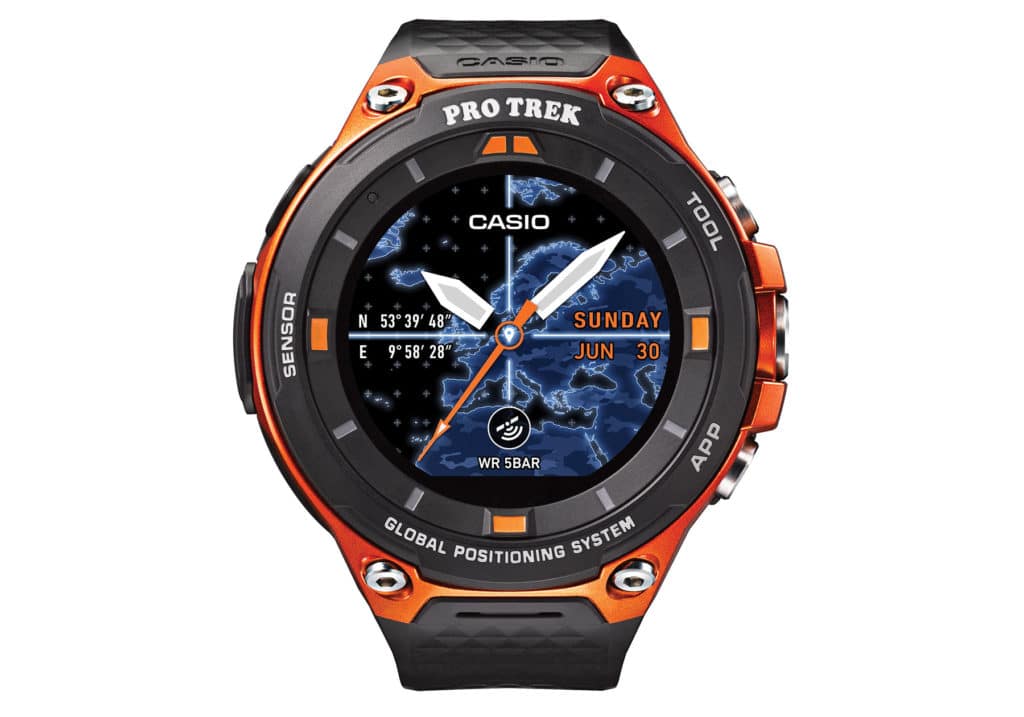
App Friendly
Casio’s Pro Tek Smart WSD-F20 continues to evolve with added functionality. Some of its fishing features include:
Location memory: Linkage between the GPS function and the full-color map enables an accurate display of current location. You can record specified points (such as where you caught a fish).
Barometer: The barometer measures the air pressures and displays tendencies in the weather.
Tide graph: The watch can show low- and high-tide phases for any given location or date.
Sunrise/sunset times
Fishbrain app: Track your catches and connect with other anglers on the app. Also useful: the fish-species-recognition tool, fishing forecasts, and bait recommendations.
The Pro Tek Smart costs $500 to $600. Fishbrain premium starts at $5.99 per month.
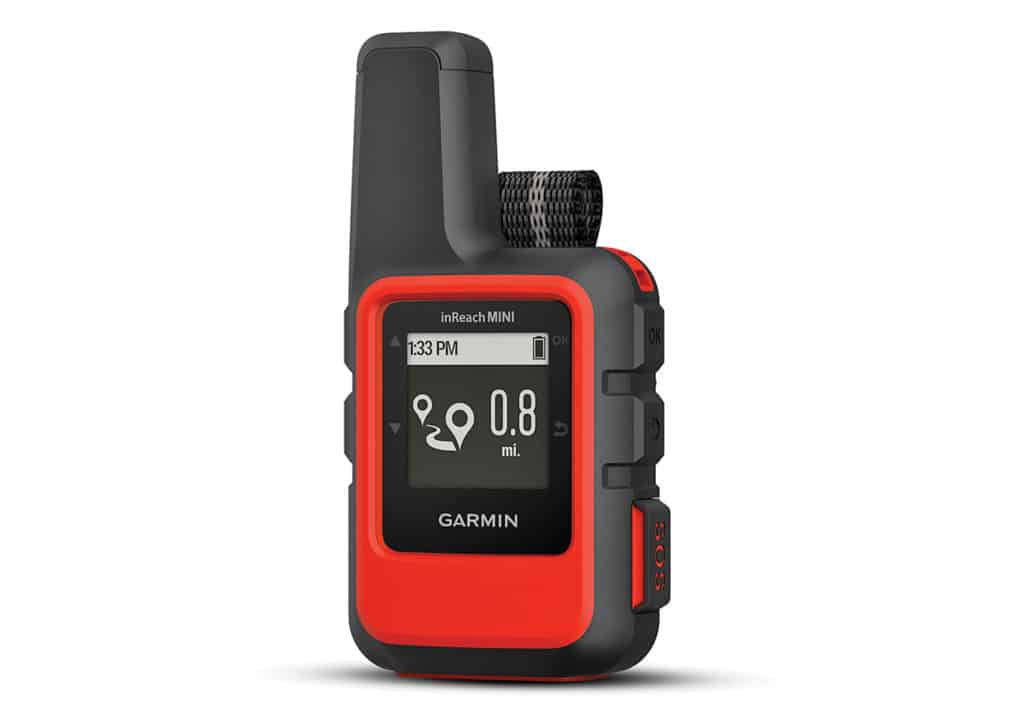
Poised to Profit
Where do wearables go from here? The technological temperature of America’s consumers might be harder to predict than you might think. Social-media giant Snapchat’s first version of its Spectacles heads-up display failed. The company just released Spectacles V2 this spring amid claims that they will actually be worn and used because the company fixed a host of problems.
A successful launch might prompt Garmin to resume its Nautix project. The company already offers a heads-up display for some of its automotive products, and more HUD integration is expected in the cycling market.
Garmin also just introduced its inReach mini, a 3.5-ounce two-way satellite-communication device, which can be hung from a lanyard around the neck or fastened onto a belt, though not technically a “wearable.”
But will that be enough to entice other marine-electronics companies into the market?
“Wearable electronics is an area that we have been watching for some time,” says Steve Thomas, product line director for Simrad Recreational Products. “As with all of our marine products, we remain committed to developing compelling solutions for consumers that offer meaningful benefits.”

